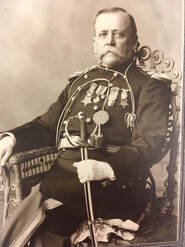 Lieutenant Burns at 51 Lieutenant Burns at 51 There's a lot more to tell about Lt. Burns (like how he was a Medal of Honor recipient) but that's for another time. Burns is also the main character in author Carol Tonneson's newest book, The Westerner: A Postcard to the Girl He Left Behind, out later this summer!
0 Comments
Jeanne Doan, Assistant Director & John J. Zimkus, WCHS Historian Three women, of varied backgrounds, joined together to become the nucleus of the women’s suffrage movement in Warren County: Lucile Blackburn Berry, Mary Proctor Wilson and Ladora Scoville Owens (once owner of Glendower Mansion).
The first meeting of what would become the Equal Suffrage League met in the Lebanon Opera House on April 22, 1912. After a committee was formed to nominate officers, Wilson was chosen as the first president and Owens as the vice president. Representatives from each township were selected and Berry was picked to represent Turtlecreek. On June 27, 1912, the committee met at Wilson’s home at 108 N. Broadway, located at the northeast corner of Silver and Broadway (The Breakfast Club stands there now). There, the League arranged for the Dr. S. D. Fess, the Republican candidate for Congress in the sixth district and the president of Antioch College, to deliver a non-partisan address at the Lebanon Opera House. There, he put himself on record for the women’s suffrage proposal. Fess would win that election and later be elected a US senator from Ohio. In 1912, multimillionaire real estate magnet and Lebanon native, William Elmer Harmon (you can learn all about him in a previous post) appointed his good friend, Owens, to be a board member of the newly established Harmon Civic Trust. Harmon had stipulated that at least two members of the Trust’s board of trustees must be women. Owens was one and Berry was the other. The League made arrangements with the Trust to hold regular meetings at Harmon Hall. By 1914, Lucile Blackburn Berry was the president of the Equal Suffrage League. On July 23, 1914, The Western Star reported that the League had “held a very enthusiastic" meeting on July 17. At the meeting, Berry "...gave a report of the results of the recent circulation of petitions. There were 1,049 signatures obtained in the County." Wilson, along with another couple, the Chapmans, were chosen to present the petitions to the Secretary of State in Columbus. Nearly 150,000 names were signed to the suffrage petitions, 46,000 more than necessary. The Western Star headline, on July 30, 1914, read, “Ohio Suffragists To Descend on State Capitol Today." And descend they did. At 4:30 that afternoon, bands accompanied suffrages from Cincinnati, Cleveland, Toledo, Akron and other areas to form a procession that marched from the Ohio Suffrage Organization's Columbus headquarters, in the Chamber of Commerce Building, to Capitol Square. Harriet Taylor Upton, the organization's president, spoke along with several others including the president of Ohio State University and Representative W. B. Kilpatrick. The counties presented their petitions and, as planned, Mr. and Mrs. Chapman and Mary Proctor Wilson presented Warren County's. Congress wouldn't draft the 19th amendment (giving women the right to vote) until 1919 but Ohio was quick to ratify it on June 16, 1919. The also passed a law stating that, if the amendment wasn't a law by the 1920 election, women would be about to view in Ohio regardless. However, by August of 1920, the amendment would gain the backing it needed (36 states) and pass into constitutional law. Thanks, in part, to a teacher (Berry), a newspaper editor (Wilson) and a socialite (Owens) who came together to fight for all Americans' right to vote, regardless of gender. Learn more of the story at Harmon Museum's newest exhibit, "Women Leading the Way."
Seventy-eight years ago today, at 7:50 a.m, Sunday, Dec. 7, Japanese aircraft appeared on the horizon over Pearl Harbor. Two hours later, 2,403 American troops were dead at what would remain the largest loss of American life in an attack until the September 11th terrorist attacks. It's one thing to recite facts but another to recall memories. Below is a video of some of the veterans that survived the attacks, recounting their personal experience during the events in their own words.
How many women out there have exercised their right to vote? On this day in 1872, Susan B. Anthony, Elizabeth Cady Stanton and two others, registered to vote at a barbershop in Rochester, NY, becomming the first women to do so. How'd they do it? Well, Anthony threatened to sue the registrars personally if they didn't let them. On Election Day, the ballots were secretly cast (the ladies dressed as men). Two weeks later Anthony was arrested and fined $100 (about $2,000 today), which she refused to pay.
It'll be more than 40 years before the 19th Amendment will grant women the right to vote in the US. On November 2, 1920, more than 8 million American women will exercise their right to vote. 2020 is all about Women's Sufferage at Harmon Museum with talks and an exhibit featuring the women who fought for the vote in Warren County! 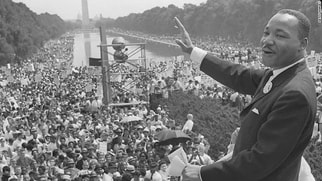 Today marks the day I was born but it also marks something else. On August 28th, 1963, in front of the Lincoln Memorial, Martin Luther King Jr. gave his iconic speech to the masses that gathered for the March on Washington for Jobs and Freedom. My favorite college history professor played this speech for us, one day in class, and cried in the wake of its weight. I was lucky enough to find this on LP at a local antique mall. There's just something electrifying about hearing it. "This will be the day, this will be the day when all of God’s children will be able to sing with new meaning: 'My country, ‘tis of thee...' And if America is to be a great nation, this must become true. And when this happens, and when we allow freedom ring, when we let it ring from every village and every hamlet, from every state and every city, we will be able to speed up that day when all of God’s children, black men (and women) and white men (and women), Jews and Gentiles, Protestants and Catholics, will be able to join hands and sing in the words of the old Negro spiritual: “Free at last! Free at last! Thank God Almighty, we are free at last!” We still have a ways to go for equality, but at least we're making progress. - Nathaniel (Marketing Manager with WCHS) by Dwight Rowe and Ron Hoffmann On the morning of July 13, 1950, a B-50D Superfortress bomber, tail number 49-0267, from the US Air Force Strategic Air Command (SAC), 97th Bomb Group, took off from Biggs Air Force Base in El Paso, Texas and began its long journey in-route to England with a planned stopover at Wright Patterson Air Force Base in Dayton Ohio: the aircraft was heavily loaded. It was flying over Warren County, Ohio at around 2:54 in the afternoon when the bomber suddenly fell from the sky and crashed approximately 4 ½ miles north east of Mason Ohio. The crash occurred west of State Route 741 and north of Hamilton Road and was being flown by Captain John Adams Jr who, at the time, had 1020 hours flight time. All sixteen crewmembers on board the aircraft were instantly killed in the crash. Clyde Shutts of Lebanon provided eyewitness testimony to the crash and said he was in his barnyard when he heard a racing engine. He said when he looked up, he saw the plane spiraling, nose down, toward the ground, and it appeared that the plane tried to pull up but then he lost sight of it as it went behind the trees. Mr. Shutts said he then heard a loud explosion. Additional eyewitness said the plane was flying at approximately 7000 feet when it began a fast decent followed by a stall at approximately 4000 feet where it began a spiral and nosedive and hit the ground. The Air Force Crash Report stated the B-50D created a crater in the ground that was approximately 125 feet in diameter and 20 feet deep. Upon impact, the explosion it created was deafening. Jerry Hoffmann of Clearcreek Township, Warren County, Ohio was 12 years old at the time of the crash and remembers hearing the explosion almost 11 miles away in Ridgeville. The loud explosion was caused by the fuel the plane carried for its 4 Pratt & Whitney R-4360 prop-driven engines and the deadly cargo it carried in its bomb bay: a Mark-4 nuclear bomb. The Mark-4 nuclear bomb, in use from 1949-1953, was based on the earlier Mark-3 Fat Man bomb design that was used on Nagasaki, Japan in 1945. Luckily for Warren County on that overcast and drizzly day, the bomb did not have its physics-package installed at the time of the crash. The physics-package is the part of a nuclear bomb that carries the fissile material which is imploded or exploded (depending on nuclear bomb design) to cause the nuclear reaction. The Mark-4 weapon on the B-50D that crashed in Warren County did have its high explosives installed though causing the exceptionally loud explosion. The high explosives are used to detonate the physics-package of the atomic bomb. Almost immediately after the crash, spectators began to arrive at the crash scene, and it was a gruesome sight as there were body parts hanging from the trees and on the ground. The local fire department arrived to extinguish the fire, and began putting up barricades to control the spectators. All highways leading to the crash site were jammed due to spectators trying to get a peek and figure out what was going on. It was estimated that 5000 people came to view the crash site that day. United States Air Force officers from Wright Patterson Air Force Base began arriving shortly afterwards. They took charge of the crash site and brought in bulldozers and clamshell diggers. They were searching for the nuclear bomb but did not tell anyone what they were looking for. Today, after almost 68 years and the loss of 16 lives on that fateful day in Warren County, there are no visible signs to remind us of that horrendous crash and the nuclear bomb that exploded in Warren County. Representatives of the Auto Pilot Branch, Aircraft Laboratory, HQ AMC were at the scene also to aid in the finding of parts of the auto pilot equipment and conduct further investigation into the possibility that the auto pilot may have caused the accident; the only identifiable part of the auto pilot found was an aileron servo motor. After a lengthy investigation by the US Air Force, Boeing, the aircraft manufacturer, and Pratt & Whitney, the engine manufacturer, the cause of the crash could not be determined because, as the crash report states: “ Due to the lack of information regarding the flight during which the accident occurred, and the almost complete disintegration of the airplane upon impact, it has been impossible to determine what part, or parts, of the airplane failed or malfunctioned, or any other cause factors to which the accident can be attributed.” *This article first appeared in the HistoricaLog for Summer/Fall 2018 as "B-50D Plabe Crashes with Nuclear Bomb Onboard in Warren County, Ohio"
Fifty years ago today, 600 million people watched with bated breath as "the Eagle" would successfully land on the surface of the moon and Neil Armstrong would utter those now famous words: "One small step for a man, one giant leap for mankind." What the 600 million people may not have known was the stories behind that small step. The Eagle lander had never been tested in the conditions before. Neil Armstrong and crewmate Michael Collins gave it a 50/50 shot at returning. President Richard Nixon prepared two speeches; one if the lander returned and another. "Fate has ordained that the men who went to the Moon to explore in peace will stay on the Moon to rest in peace. These brave men, Neil Armstrong and Edwin Aldrin, know that there is no hope for their recovery. But they also know that there is hope for mankind in their sacrifice." With even odds, Edwin "Buzz" Aldrin and Neil Armstrong embarked toward the surface of the moon, a NASA landing program guiding them in. The program was to ensure the lander did so safely, however, part way into the process, the two men realized that the program was guiding them to land straight into a crater in which taking off from would have been nigh impossible. Armstrong got the go ahead to take control of the helm and land the Eagle in a new position, safely outside the crater, having only 20 seconds of landing fuel left. (Here's a wonderful video of the 13 minutes leading up to and the actual landing.) The 600 million people watching Neil Armstrong take his first steps on the moon did so via an 80ft satellite in Australia. Only having confirmed a live broadcast several weeks before, NASA wasn't sure what to expect. On the day, they came to discover that, due to the positioning of the Earth and their satellites, the Eagle lander's signal wouldn't be receivable by NASA until several minutes AFTER this historic event. Not only would the millions of people around the world miss the landing but NASA would not have contact with its astronauts or their vitals during this crucial phase of the mission. Luckily Australia wasn't in the space race with the US. Armstrong would become the "first man" to step foot on the moon. Interestingly enough, on previous exploration missions, the commander would always stay behind while the subordinate did the exploring. Stories vary if NASA thought Armstrong should go first or if Aldrin deferred to his CO. In either case, Aldrin would still get to leave his footprints on the moon's surface 20 minutes later. However, out of jealousy, Aldrin took only five photographs of Armstrong while on the moon. The sixth image comes in the form of Armstrong's reflection in Aldrin's visor. Today, in 1775, Paul Revere and William Dawes embark on their Midnight ride from Charlestown to Lexington to warn the patriots. Yes, there were two of them, no matter what Henry told you... In Lexington, they where joined by Samuel Prescott and continued to Concord before being captured by a British patrol. Two others would also later make historic rides; Israel Bissell and Sybil Ludington.
AND Exactly eight years later, in 1783, the Revolutionary War came to a close. Certainly made your American History test a little easier. You only had to remember one month and day! April 18th! On April 4th, 1968, Dr. Martian Luther King Jr was fatally shot while on his balcony at the Lorraine Motel in Memphis, TN. King was in Memphis in support of African American city sanitation workers after unequal wages, poor treatment and finally the deaths of two workers caused a strike.
A clergyman and prominent leader in the Civil Rights Movement, Dr. King was a Nobel Peace Prize laureate (recipient), known for his use of nonviolence and civil disobedience. Dr. King was nearly fatally stabbed in 1958 and had constant death threats made against him, including a bomb threat made against the plane he planned to fly to Memphis on. On April 3rd he gave his last public address, later known as the "I've Been to the Mountaintop" address, part of which was as follows: "Well, I don't know what will happen now. We've got some difficult days ahead. But it doesn't matter with me now. Because I've been to the mountaintop. And I've looked over. And I've seen the Promised Land. I may not get there with you... But I want you to know tonight, that we, as a people, will get to the Promised Land! And so I'm happy, tonight. I'm not worried about anything. I'm not fearing any man. My eyes have seen the glory of the coming of the Lord!" 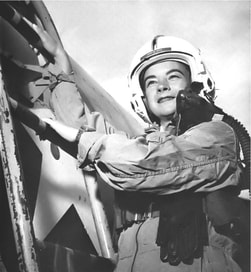 Jerrie Mock first flew in an airplane when she was seven. She told her parents she would grow up to be a pilot. From Newark, Ohio, after graduation, she went on to study engineering at Ohio State University. She was the only woman in their program. She was also the only one to score 100% on the exams. When she met her husband, she dropped out of school to be a housewife. Both she and her husband shared a love of travel, aspired to be pilots and took turns acquiring their licenses. Three children later, Mock planned her trip around the world because she wanted to see the world and said that she was "bored." When they realized no woman had tried the feat since Amelia Earheart, the news spread. A headline of the Columbus Sunday Dispatch read "Bexley Housewife Plans World Flight. Hopes To Be the First Woman To Go Around the Globe by Air." On March 19, 1964, the fulltime housewife and mother of three departed Port Columbus to a crowd of hundreds, beginning the historic flight that would forever cement her place in history. It took about a month (returning on April 17th) but, in her single-engine Cessna 180, “Spirit of Columbus," (nicknamed "Charlie") Jerrie Mock became the first woman to fly solo around the world. She didn't set out to become famous but by the time she landed she was a household name. With this trip, and several future ones, she earned praise and set many records. However, with the development of space race only a few years later, the public's attention fell higher in the sky and Jerrie Mock was all but forgotten. For an extremely nice article on Jerrie Mock, click here. Jerry was the First Woman to...
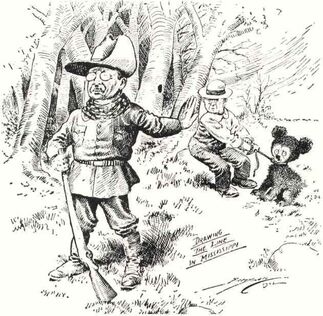 Clifford Berryman's cartoon Clifford Berryman's cartoon On this day in 1903, the teddy bear first debuted. In November 1902, President Theodore Roosevelt needed a vacation which, in the Rough Rider's case, meant hunting. On the second day, an old black bear was caught, clubbed and tied to a tree for the president to shoot. Roosevelt refused the unsportsmanlike opportunity. Reporters caught wind of the event and Washington Post cartoonist Clifford Berryman depicted the bear as being a cub. Brooklyn candy-shop owner Morris Michtom saw an opportunity of his own and asked his wife, Rose, to make stuffed-toy bears to sell in their shop. They requested the permission, from the president to call them “Teddy’s bears" and he agreed. 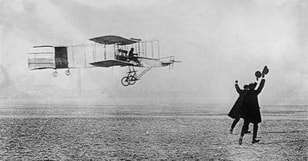 "If birds can glide for long periods of time, then why can't I? - Orville Wright On December 17th, 1903, the Wright Brothers made history with the first powered flight at the dunes of Kitty Hawk. The flight lasted 12 seconds and covered a distance of 120 feet. The brothers would go on to complete three more successful flights that day with the longest lasting 59 seconds and covering 852 feet. Now that's progress! 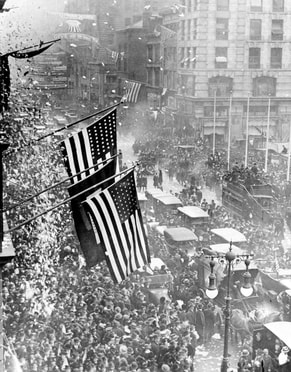 - from the desk of John J. Zimkus | WCHS Historian/Educational Director (The following is the text of a speech given on November 11, 2018, at Runyan Field in Lebanon, Ohio marking the centennial of the Armistice ending World War I.) One hundred years ago today, on November 11, 1918, an armistice went into effect. It was the formal agreement to stop the fighting in what was called “The Great War,” “The war to end all wars” better known today as World War I. They didn’t know at that time that a little over 20 years later we had to start numbering such devastating conflicts. The armistice was between the Allies - Britain, France, Russia, Italy and the United States, and their opponent, Germany. Separate armistices had already existed between the Allies and Germany’s partners in what was called the Central Powers - Bulgaria, the Ottoman Empire and the Austro-Hungarian Empire. The armistice was signed in a railway car in an area in Northern France called Compiègne, around 5:00 a.m. It was agreed that at 11 a.m. that same day, November 11, 1918,—“The eleventh hour ,of the eleventh day. of the eleventh month”— the ceasefire would go into effect. During the 6 hours between the signing of the armistice and its enforcement, although some opposing armies on the Western Front began to withdraw from their positions, along many other areas the fighting continued. Consequently, on the last day of World War I, there were nearly 11,000 casualties, of whom 2,738 were killed. An American, 23-year-old Henry Gunther from Maryland is generally recognized as the last soldier to die in action in World War I. He was killed at 10:59 a.m. Paris time, 60 seconds before the armistice went into effect. The actual terms of the armistice, largely written by the Allied Supreme Commander, MarshalFerdinand Foch of the French Army, included the cessation of hostilities, the surrender of aircraft, warships, and military materiel, the release of Allied prisoners of war and interned civilians, and eventual reparations. News of the armistice reached Lebanon, Ohio around 3 in the morning, that Monday, November 11, 1918, about 6 hours after the actual announcement was made in France. Many of the people who were awake at that time in Lebanon remembered the false United Press dispatch announcing “peace” the previous Thursday and were slow to accept this news as being genuine. Around 6 a.m. the armistice announcement was verified and, as The Western Star reported, “The fun started.” Church bells, fire bells, train and factory whistles united in what was called a “Glorious hallelujah.” The noise attracted the attention of every citizen in Lebanon. It was said few people took the time to eat their breakfast that morning but instead rushed into the streets to join the crowds already there. The newspaper reported,“ Then until noon - pandemonium reigned.” The Lebanon schools, Lebanon High at that time being located were Pleasant Street Park is today, were closed. They were scheduled to open that very day after being shutdown for several weeks due to the deadly Spanish flu epidemic that had spread throughout the country. Now however, teachers and students joined the celebration in the streets. Stores closed and business in Lebanon in general was suspended. Such signs as “To Hell With the Kaiser” and “Closed to Celebrate” were posted in many the town’s store windows. Parades sprung up spontaneously all over Lebanon. People shouted themselves hoarse in and effort to be heard and join in the noise of the car horns, cow bells, tin horns, tin pans and other instruments of noisy celebration. The executive committee of the fraternal organization called the Men of Lebanon hastily and successfully made preparations for a parade to begin at 9:30 a.m. It started from Harmon Hall headed by several members of the Harmon Hall Band. It was said there was scarcely room for people on Broadway. Boy Scouts, Girl Scouts, school children, men, women and automobiles galore. The procession was said to be nearly a mile long. After the parade went over the principal streets of town, Judge Frances M. Hamilton was asked to speak. He paid tribute to the brave boys from Lebanon who had helped to achieve this great victory. He then told the crowd that Lebanon will never again hold such a demonstration as on this day, save one - “When our boys come home.” Several songs were sung by the crowd led by Miss Laura B. Cunningham and elementary teacher in the Lebanon schools. Then every man and woman in the vast group bowed their head in a moment of silent prayer. After that Mayor Murphy proclaimed that day, November 11, 1918, a holiday. Preparations were then immediately launched for what was described as a “Mammoth parade" for that night. Promptly at 7 p.m. the great procession began with the Harmon Hall Band providing the music. At “each corner new faces joined in.” It was reported, “This was one time when everyone was an [equal]. The humblest and highest marched side by side.” Following this parade speeches were made. One was by Judge J. A. Runyan, the namesake of the Runyon Field in which we are gathered this morning. He was from the Local Draft Board. Another was by Attorney Frank C. Anderson representing the Red Cross. Judge F. M. Hamilton read a poem written by Cpl. William McKinney of Lebanon’s own Company E of the First Regiment of the Ohio National Guard who trained on this spot and went into battle at part of the 147th Infantry, 37th Division, of the American Expeditionary Forces. The last stanza of Cpl. McKinney’s poem reads: “To mothers of men that have fallen On the field of battle in France, Let not your hearts be worried For they were given a chance To give their hearts to their maker. Your prayers were not made in vain. When the trumpet of judgement has sounded You and he shall meet again.” Three days later, on November 14, 1918, an editorial in The Western Star entitled simply “PEACE” said in part:
“Not since the morning stars sang the anthem, ‘Glory to God in the highest, and on earth Peace, good will to men,’ has the world heard so joyful an announcement as that which the wires carried on Monday morning, announcing the signing of the armistice on the part of the German government. “No wonder Lebanon - Warren County - Ohio - the United States - the World acted as though it were insane with joy. No wonder tears and laughter intermingled. No wonder the old forgot their age and became youths again. No wonder the young assumed the age of discretion and discussed ‘What [Marshal] Foch had done.’ Nothing was to be wondered at . . . on Monday. “Peace - Sweet Peace - Peace with Victory - Peace with Honor, had come. 100 days ago every cloud was black with the possibilities of an autocratic German victory. 100 days ago there was hardly a bright spot in the sky as big as a man’s hand. But those who had faith saw a bright spot and said, ‘All will be well.’ “As a French woman said, ‘God happened,’ and the bright spot grew in size. God’s emissaries, led by that most wonderful man, General Foch, who left his staff on many an occasion to enter a humble chapel and pray for the success of his army, have overturned the hosts of hell and won a victorious peace.” This is 23rd in a series of oral histories. To summarise for those who haven't read the first blog post; We will be exploring the many stories of service men and women and the experiences they've had at war. The stories will range from WWII to the recent wars in Iraq and Afghanistan.
To learn about Rusty Adams' experiences, click here. |
AuthorVarious staff and volunteer writers. Categories
All
Archives
April 2024
|
Email: info@wchsmuseum.org
Wchs Office/Harmon MuseumTues - Sat: 10am - 4pm
Year Round |
1795 BEEDLE cABINPhone for hours
Year Round |
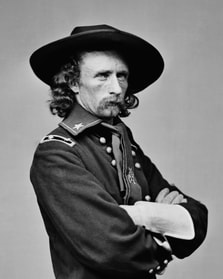
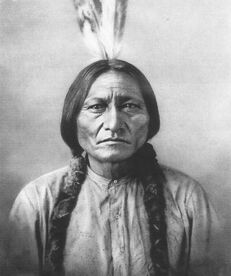
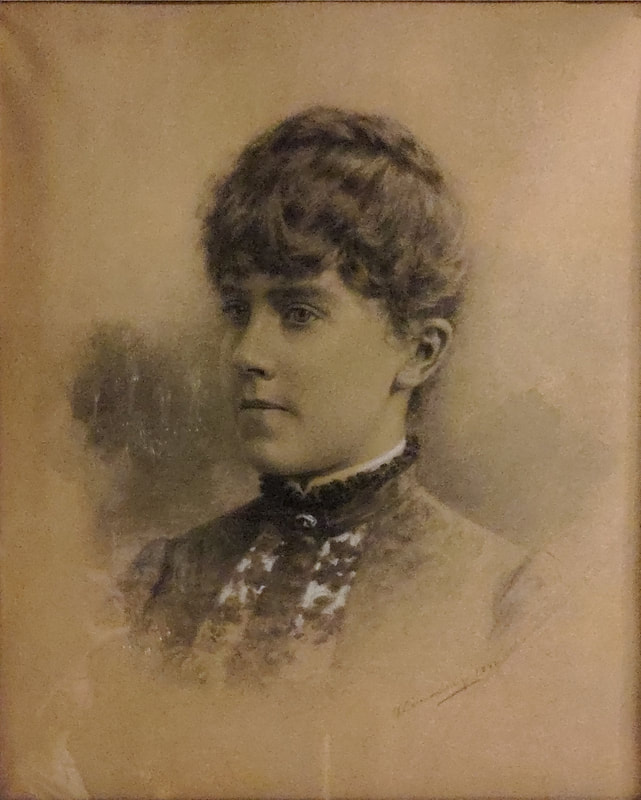
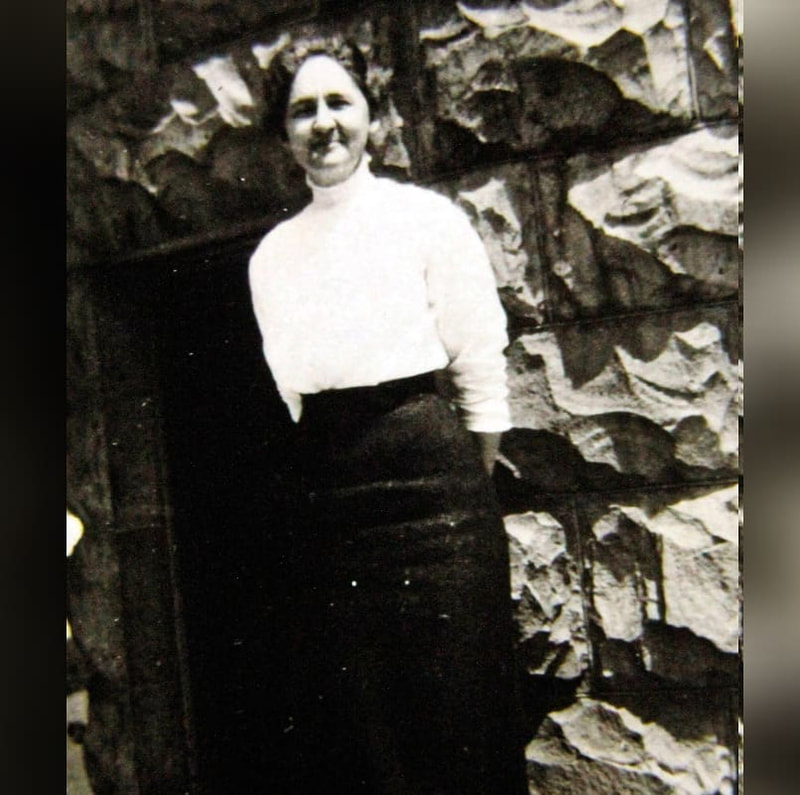
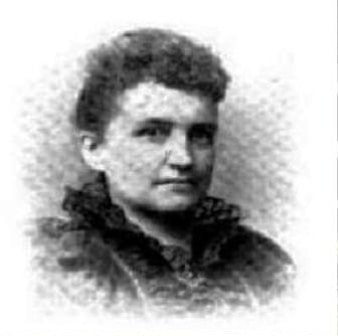
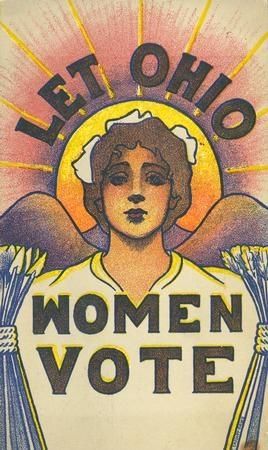
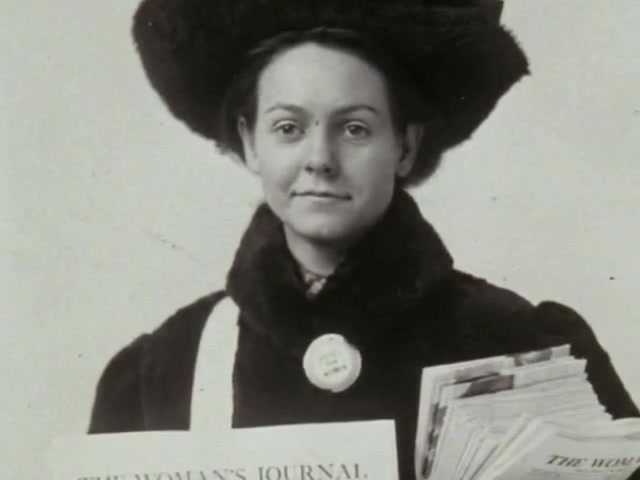
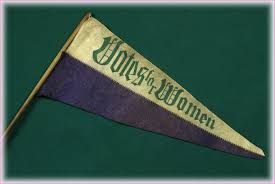
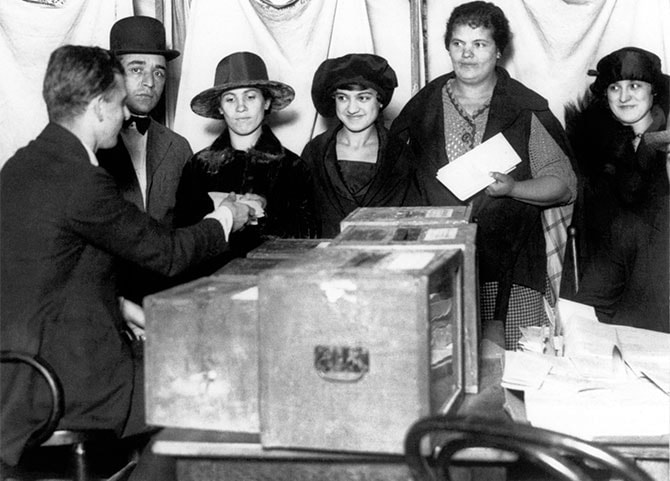


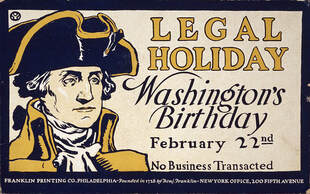
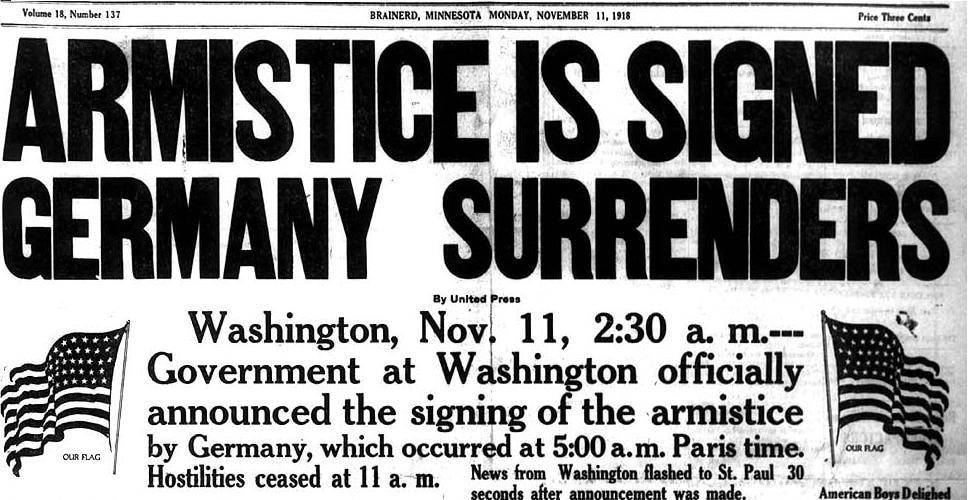

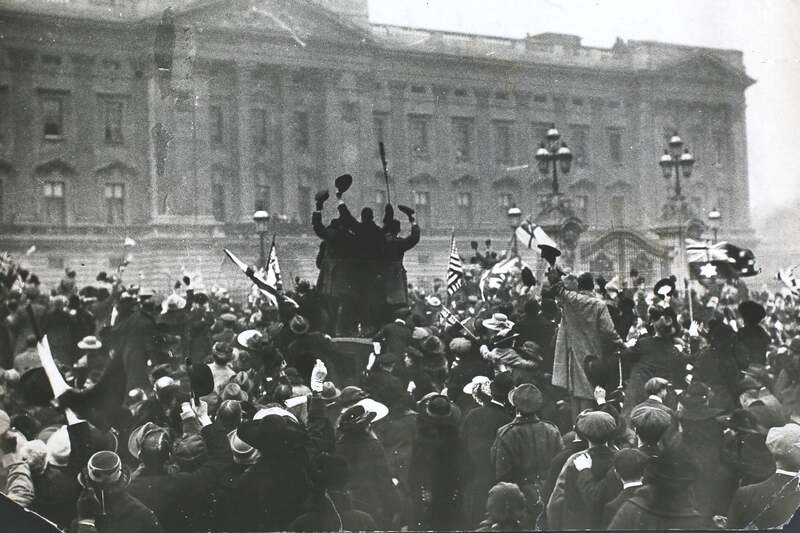
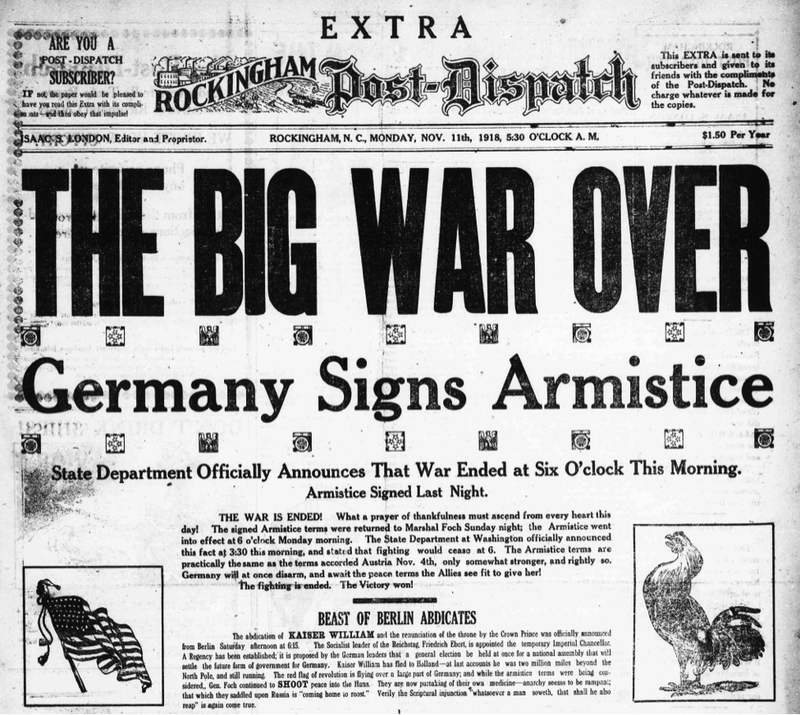
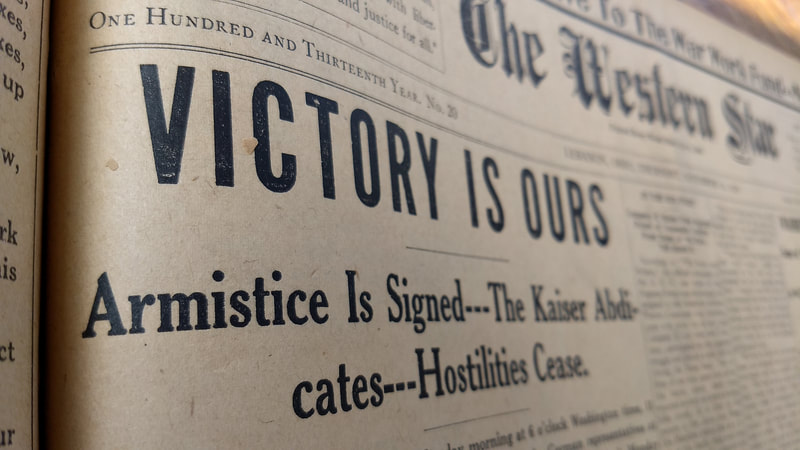
 RSS Feed
RSS Feed





